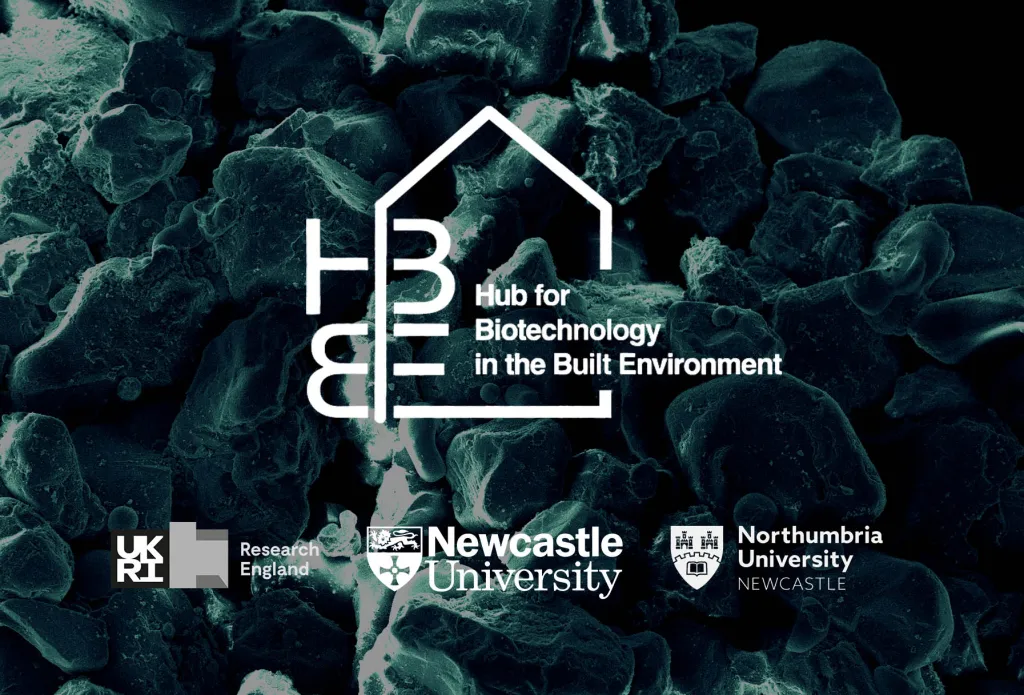Hub for Biotechnology in the Built Environment
The HBBE's vision is to make built environments which are life-sustaining and sustained by life. Our mission is to develop biotechnologies to create a new generation of ‘Living Buildings’ which are responsive to their natural environment.
Dr Magdalini Theodoridou has been a member of the Hub for Biotechnology in the Built Environment (HBBE) since 2020. She has been involved in various projects, including:
Biological self-healing for earthen construction materials
The biological self-healing research for earthen construction materials investigates the use of Microbially Induced Calcite Precipitation (MICP) by soil bacteria, like Sporosarcina pasteurii, to enhance the durability of earth-based construction materials. By embedding these bacteria into compressed earth bricks, our study found a notable improvement in their strength and durability, with treated samples performing up to 70% better than untreated ones.
Research by: Derrick Mwebaza, Magdalini Theodoridou, Martyn Dade-Robertson, Agostino Walter Bruno, and Ben Bridgens
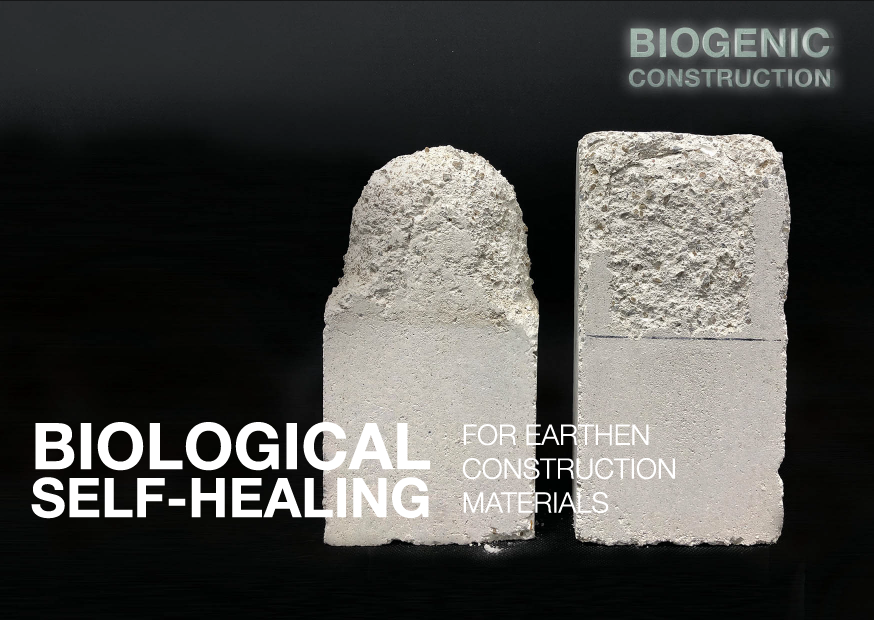
Healing Masonry
The research on Healing Masonry prototype introduces a blend of biological self-healing systems into masonry materials, presenting a sustainable alternative to conventional construction. Utilising Sporosarcina pasteurii for biomineralisation, the project transforms red lime mortar into a visually engaging medium that shifts colour as it repairs itself and highlights the aesthetic and protective advantages of biomineralisation in building materials.
Research by: Magdalini Theodoridou, Derrick Mwebaza, Martyn Dade-Robertson, Angela Sherry, Meng Zhang, Dilan Ozkan, Armand Agraviador, and Oliver Perry
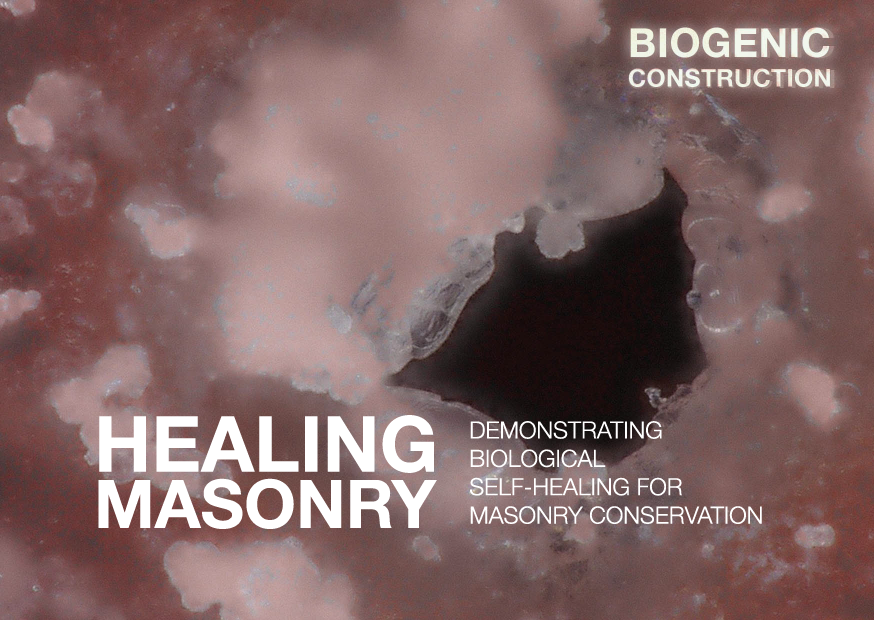
Biological self-healing with micro-vascular networks in lime mortars
This study explores the use of microvascular networks (MVNs) to instill self-healing properties in lime-based mortars, aiming for enhanced durability in building materials. Through laboratory experiments with mortars incorporating empty 3D printed MVNs, Sporosarcina pasteurii bacteria, and sodium silicate, they observed significant improvements in flexural strength after damage.
Research by: Magdalini Theodoridou, Cristina De Nardi, Michael Harbottle
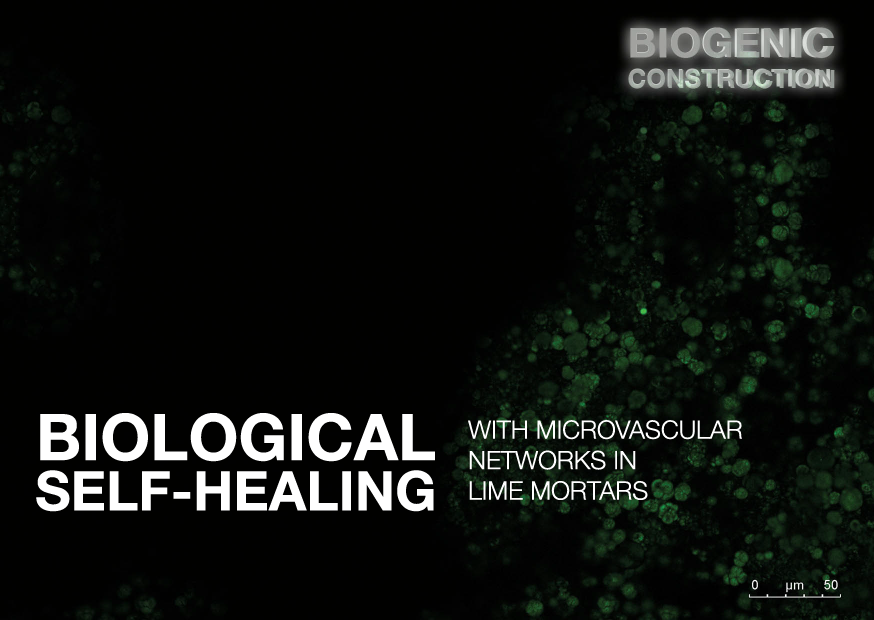
Healing stone
This study explores the use of microbial-induced calcite precipitation (MICP) for repairing cultural heritage stone structures damaged by armed conflict, such as bullet impacts. It demonstrates how biomineralisation can effectively stabilise fractures and reduce decay rates, offering a sustainable, cost-effective conservation method. Experiments on sandstone cubes with simulated ballistic damage, treated with bacteria, showed significant restoration, highlighting MICP’s potential for preserving heritage transparently and efficiently in post-conflict scenarios.
Research by: Derrick Mwebaza, Magdalini Theodoridou, Lisa Mol, Oliver Campbell, Oscar Gilbert, and Michael Harbottle
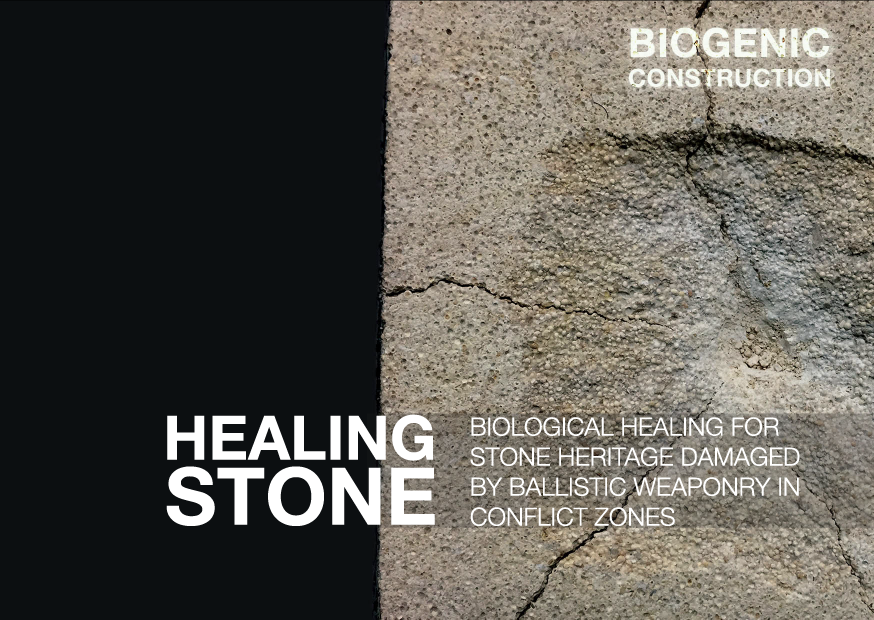
Self-healing stone
This research explores the use of microbially induced carbonate precipitation (MICP) by bacteria like Sporosarcina pasteurii and S. ureae as a conservation method for natural stone masonry, enhancing durability without compromising stone breathability. Traditional protective treatments often block stone’s natural porosity, but MICP provides a self-healing, sustainable alternative that extends the life of stone structures.
Research by: Magdalini Theodoridou, Michael Harbottle, Oana Adriana Cuzman, and Brunella Peritto
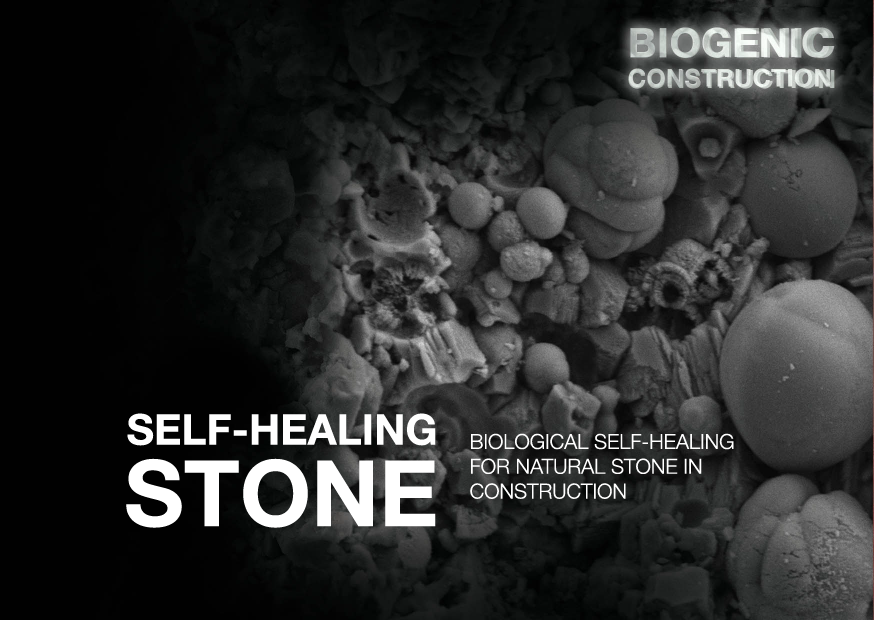
About the Hub
The HBBE is a unique research centre, not only for the North East of England but also internationally and is an example of what can be done when two neighbouring research institutions come together. Our contribution to the national research base is to make the UK a leader in this new field of Biotechnology in the Built Environment by creating a research hub capable of creatively designing and building using biotechnology at multiple scales, from molecular interactions to whole buildings, while addressing the human context of their deployment.
The HBBE offers a growing portfolio of research equipment and facilities, including a state-of-the-art workshop and multi-omics laboratory, making us an increasingly attractive research partner for prospective local, national and international industrial collaborators. We have notable collaborations with Procter & Gamble (P&G) and members of our advisory board include local innovative architectural practices such as Falkner Brown, national engineering companies such as Cundall and multinationals including IBM.
At the centre of the HBBE is a unique piece of research infrastructure, the OME. The OME is an experimental house built in the heart of the Newcastle University campus behind the Great North Museum and will act as a location for HBBE experiments and as a shop window for our research.
The North East was the centre of the first industrial revolution. Through its network of academics, industrial partners and educational programmes, the HBBE will catalyse the North East as the centre of what is commonly termed, the 4th Industrial Revolution by blurring the lines between the physical, digital and biological and changing the way we build and live in our environments.
